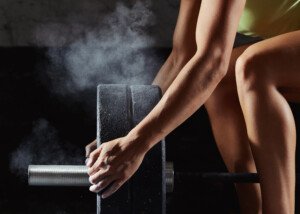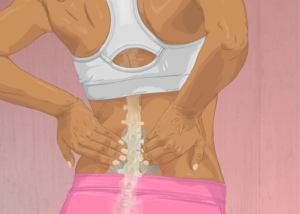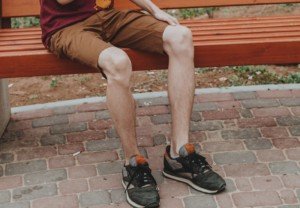
Learn what treadmill incline walking can do — or not do — for skinny, puny calf muscles.
If you’re fed up with your skinny little calves, perhaps you’ve decided to give incline walking on a treadmill a try.
If you want to improve heart health, walk the incline on a treadmill.
If you want to build up your calves, you’ll waste your time thinking a treadmill will do the trick.
Look at it this way: If you want to build up your quad muscles, would you walk on an inclined treadmill? Or would you do heavy squats and leg presses?
Calves are muscles too, and to build them, you must lift weights with them.
Why Walking on a Treadmill Incline Won’t Build Calves
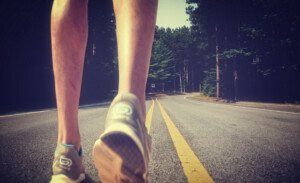
I once saw a man walking the 15 percent incline; he was a personal trainer and did not have skinny calves.
He was holding onto the front of the machine, which was making his body angle back to match the incline angle; the result was that he was, essentially, walking at zero incline due to this mistake. Below is an image depicting what he looked like.
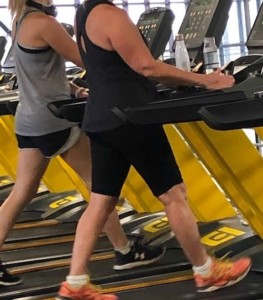
I asked him what his goal was and he replied he wanted to build up his calves!
You might be thinking that since he was a personal trainer, he was correct with his approach.
He was dead wrong, and the explanation that follows will help you very clearly understand why.
Walking an incline will create a burning feeling in the calves of people new to this kind of walking.
This tricks them into thinking that muscle growth will be stimulated.
But how much something “burns” is not predictive of muscle growth.
Otherwise, holding soup cans over your head for 30 minutes nonstop (which would eventually produce a burn) would build huge shoulder muscles, right?
Of course not!
- To build muscle you need heavier and heavier resistance over time. This is called progressive strength training.
- Walking a treadmill incline is called aerobic training.
There are two kinds of muscle fiber:
1 Slow twitch
2 Fast twitch
Slow twitch is designed for endurance. Walking, jogging steady state or Zumba are endurance based activities and thus, recruit mainly slow twitch fiber.
Slow twitch fiber does not grow in size. It gets more efficient with training, but does not get bigger.
Slow twitch fibers can “hurt” or “burn” — but they do NOT get bigger.
Sprinting and lifting heavy weights recruit mainly fast twitch fiber. Fast twitch will grow in size when challenged enough.
To make the fast twitch in calves grow, you must recruit these fibers.
#1 Calf raises with heavy resistance
#2 Supplement with heavy deadlifts and squats (ever see a man with skinny calves like in the images above deadlift 400 or squat 500?)
#3 Genetics play a big role. Some people were born with well-shaped calves.
The personal trainer I spoke to did not have an understanding of slow twitch vs. fast twitch muscle fiber, and instead … he equated incline walking with hypertrophy.
And plus, he wasn’t even incline walking because his body was tilted back with the incline, netting a zero percent incline.
Still Skeptical?
Ask yourself how you’d get a bigger chest: pushing against a wall while standing for 20 minutes straight (endurance), or lying on your back and bench pressing the heaviest barbell you can do for eight to 12 repetitions (strength)?
If treadmill incline walking indeed made calves bigger, then hiking enthusiasts would have the calves of competitive bodybuilders. So would triathletes and marathon athletes.
Even if you keep your hands off the treadmill while using the incline, you still won’t get bigger calves this way.


